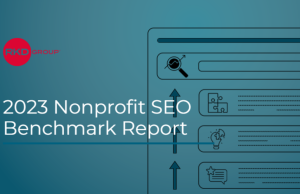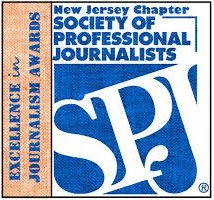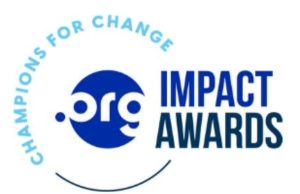By now, you’ve surely heard about the incredible levels of engagement possible through a short message service (SMS) program and the widespread growth in adoption of SMS throughout the nonprofit industry.
But some preconceptions are hard to overcome, like the belief that SMS is only the dominion of fundraisers at nonprofits with universal name recognition and an urgent mission.
If that was true once, it isn’t anymore.
Fundraisers at nonprofit organizations of all sizes and missions are seeing success building SMS programs to support wide-ranging goals, helping enhance supporter engagement efforts, from fundraising to advocacy to events.
First, a quick look back at early SMS use cases. In the aftermath of disasters, it was the Red Cross utilizing text-to-give functionality. You remember how this goes — during a substantial emergency, celebrities would gather for a telethon and “Text $5 to XXX to donate” would flash across the screen. Supporters from all over the country would send a text and the transaction would be seamlessly appended to a supporter’s cell phone bill, but at a huge cost to nonprofits, limiting its use to giant organizations and the scale of natural disasters.
But flash forward to now, and the good news is that SMS has become much more diversified and accessible. In fact, text-to-give is now rarely used by nonprofits to interact with their supporters. As with email, SMS has followed a similar course: experimentation, adoption and innovation. It is among the fastest growing direct-marketing channels, with some nonprofits having raised as much as $1 million in the first year launching new programs.
With SMS, you get most of the benefits of first-mover status in this still nascent channel, while getting to draw on the hard-won experience of others. Launching an SMS program is among the best ways to generate new and diversified revenue.
The world of SMS has long been divided into two main types of programs with different strengths, weaknesses and legal considerations: broadcast and peer-to-peer programs. With broadcast SMS (think Mobile Commons, Tatango), you grow and cultivate a list over time and message people who have opted in. Like with an email program, you craft content, deploy it, analyze it — but you also benefit from the immediacy of going right where your supporters’ attention is most closely held: their phone.
On the other hand, peer-to-peer programs are almost exclusively the domain of SMS. With tools like Hustle and GetThru, you utilize volunteer or staff capacity to hit the send button on one-to-one messages. This is usually much lower-priced and you can message anyone, regardless of whether they’ve opted in to receive communications from your organization (individuals are doing the texting, rather than your organization).
It gets even more dynamic. Starting an SMS program isn’t a binary choice between these approaches. Fundraisers utilize broadcast SMS to add a growing revenue channel to the mix, and leverage peer-to-peer for higher touch or more unique cases. Also, there are new-to-market tools like Trilogy’s Textify, which draws upon both broadcast and peer-to-peer methodologies and tactics.
For many organizations, discussion of launching SMS programs starts — and ends — with its high upfront costs. Don’t let this deter you. Since SMS is growing in its power and adoption rates each year, the time to invest the resources in tackling these challenges is now. Right now.
Fundraisers at many organizations start with a small scale contract then scale up once they are able to demonstrate the return on investment that SMS is able to provide. Better yet, a bold investment will help ensure you do not need to worry about message caps or overage fees and are able to truly leverage the strengths of mobile.
Nonprofit marketers for years have seen the balance of donations shift from desktops to mobile, with more than 50% of online gifts now coming via mobile forms. With that being the case, it’s a short hop to SMS emerging as a true compliment to email in nonprofits’ toolbox. It’s obvious and self-evident: Supporters who donate over mobile have demonstrated high propensity for responding to SMS appeals.
If you begin with a smaller-scale contract, start wide with your appeals, then narrow your approach based on who engages most with your texts. This approach should create a streamlined, dedicated group of folks who will be highly valuable to your organization.
The early testing has been done, and there are now best practices around growing an audience. A couple tactics that have proven successful:
- Asking supporters over other channels – such as email and Facebook — to opt-in for updates;
- Adding an SMS field to your existing signup forms, the ones you use for organic and paid acquisition (this has driven explosive growth for some nonprofits); and,
- Appending cell phone numbers to supporter records using third-party sources.
The best thing about adding an SMS field to your forms is that any impacts on completion rates are offset by supporter who’ve self-identify to get more high-touch engagements from you. Your supporters are likely as happy to provide their phone number as they are an email address.
As you consider SMS, ask yourself this question: What does your direct marketing apparatus need? SMS is a premier option if the answer is revenue, or new advocates, or a bigger audience of supporters to help spread your message. This central question has accounted for a massive explosion in variation in the ways organizations use SMS.
No matter the mission or goal, SMS has proven incredibly successful, meaning virtually any organization can run a program that corresponds with their respective scale and scope. SMS can be used to pivot from softer-than-projected results from other acquisition sources or as a way to immediately deliver urgent advocacy asks straight to someone’s hip pocket.
Even better, it can be used for high-value audiences — a key segment direct marketers know requires a variety of specialized touchpoints that feel as one-to-one as possible. One nonprofit reported drawing on SMS to engage mid-level donors with open and engagement rates far outpacing email efforts.
What does this mean? SMS isn’t only viable. In many cases, it may be the channel best suited to the goals you’re pursuing.
For all its practical benefits, here’s one more element of SMS to excite you and others in your organization: It’s fun. Character counts and image limits place a premium on what we might call creative economy. Boring texts won’t cut it. Therefore, it’s incumbent on organizations to figure out how best to render authenticity with concision. There’s no one solution to this, only an answer that is as enjoyable as it is challenging: test, test, test to find out what works for your SMS audience.
Regardless of your size, SMS is a channel that you should carefully consider. The opportunity to add a platform to your infrastructure that is demonstrating effectiveness — while not being as ubiquitous as email — is one organizations should run toward. And imagine how you’d feel if your phone buzzed with that message? See. The time’s now.
*****
Amanda Peña is an associate vice president at MissionWired, specializing in acquisition and SMS strategy and development. Her email is [email protected]











